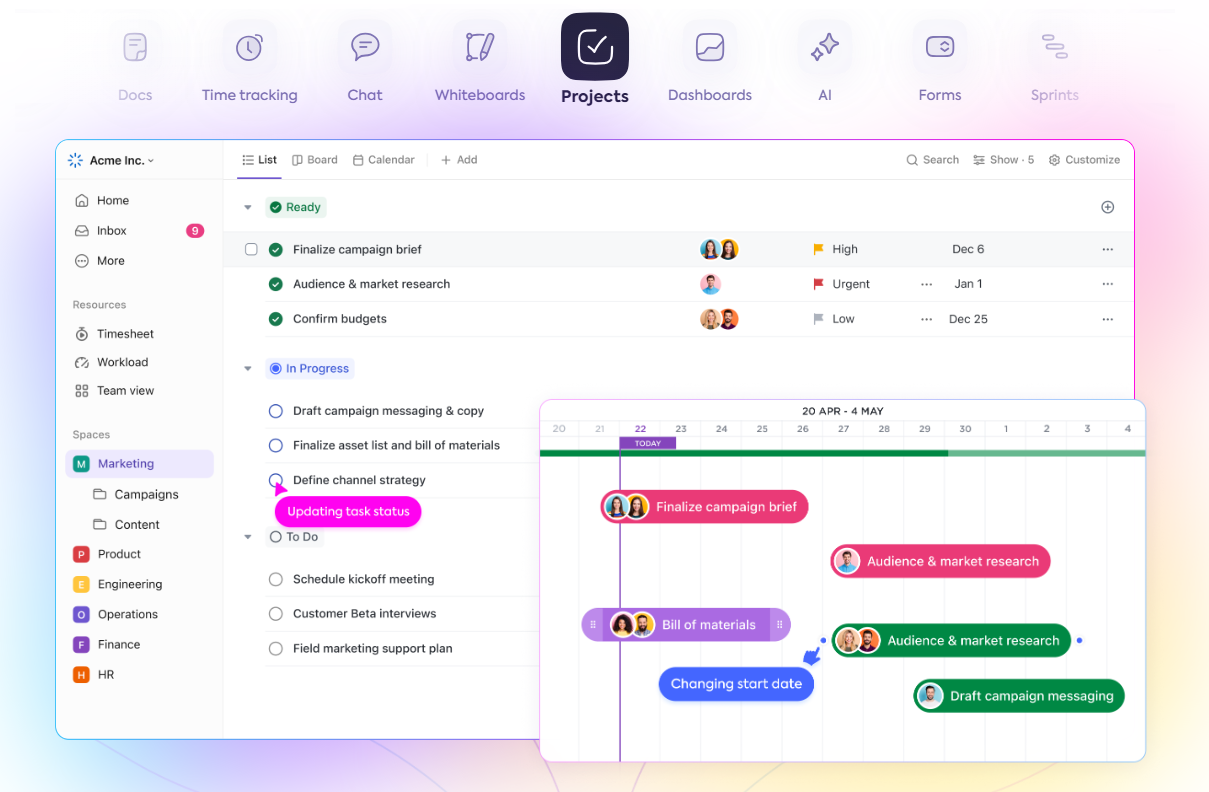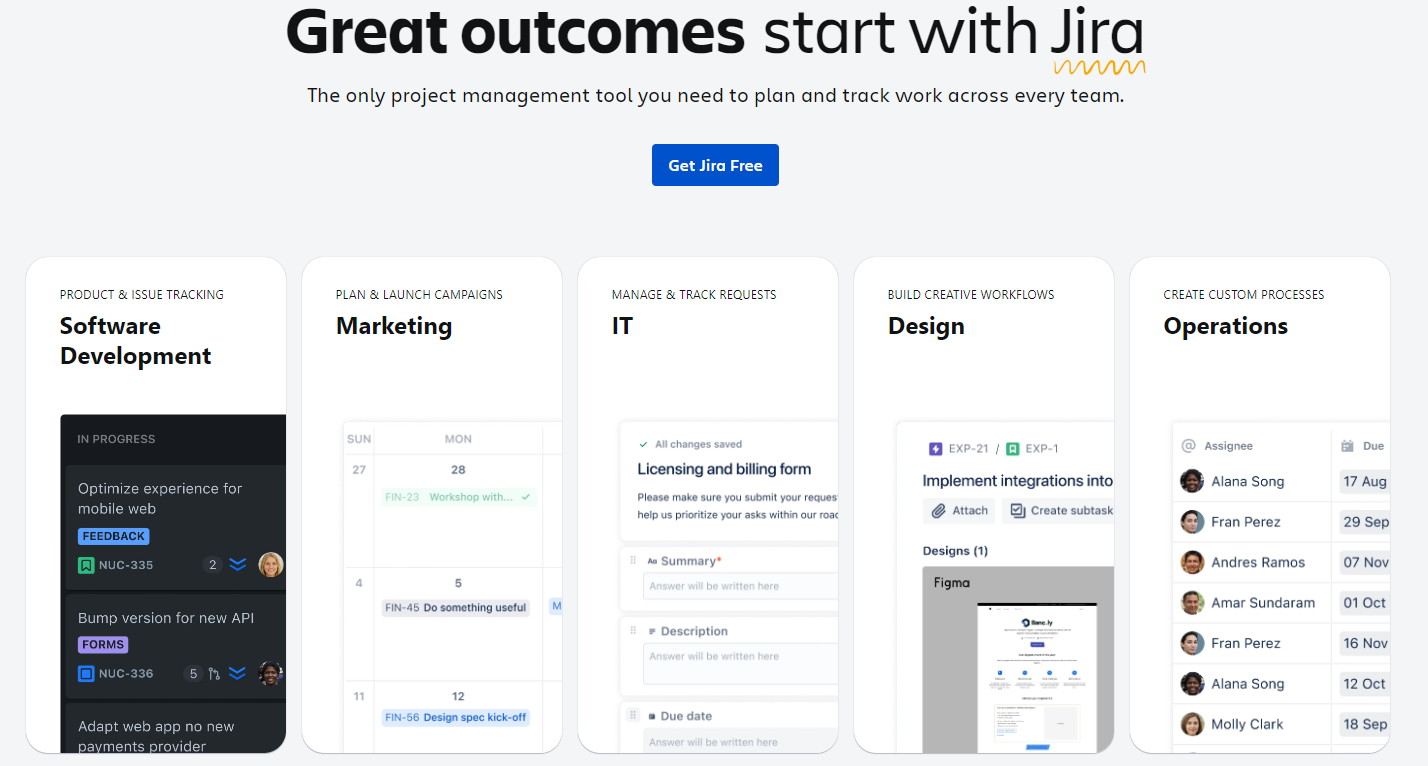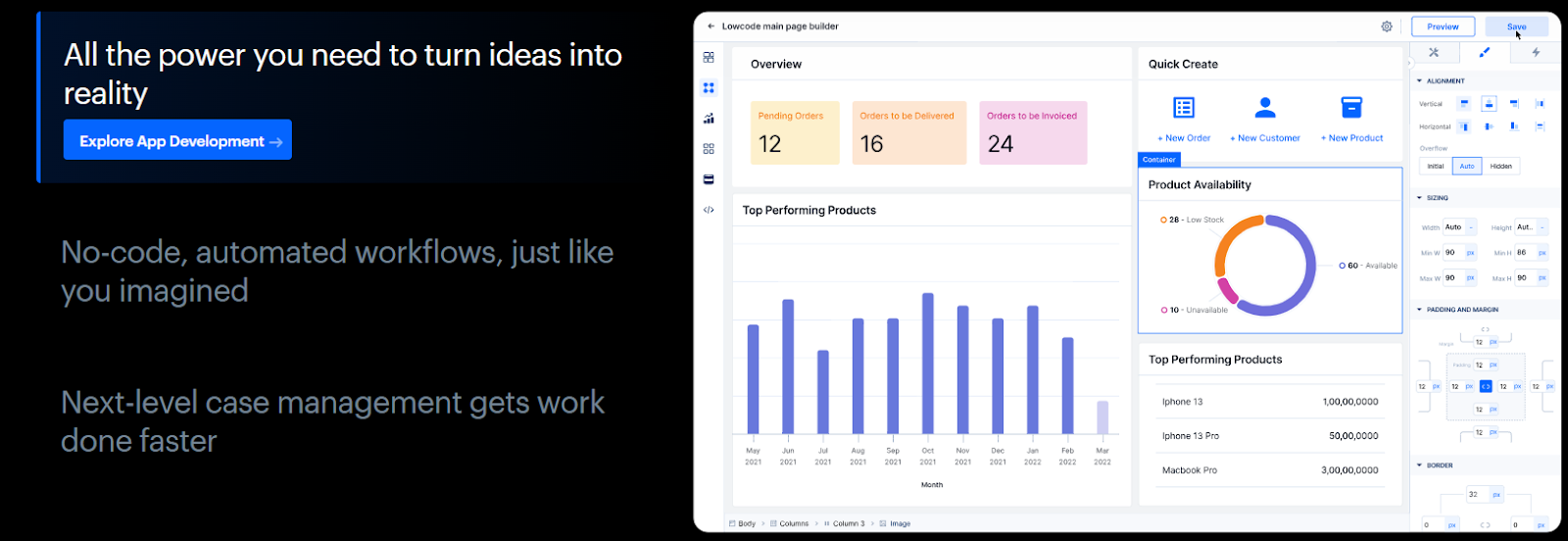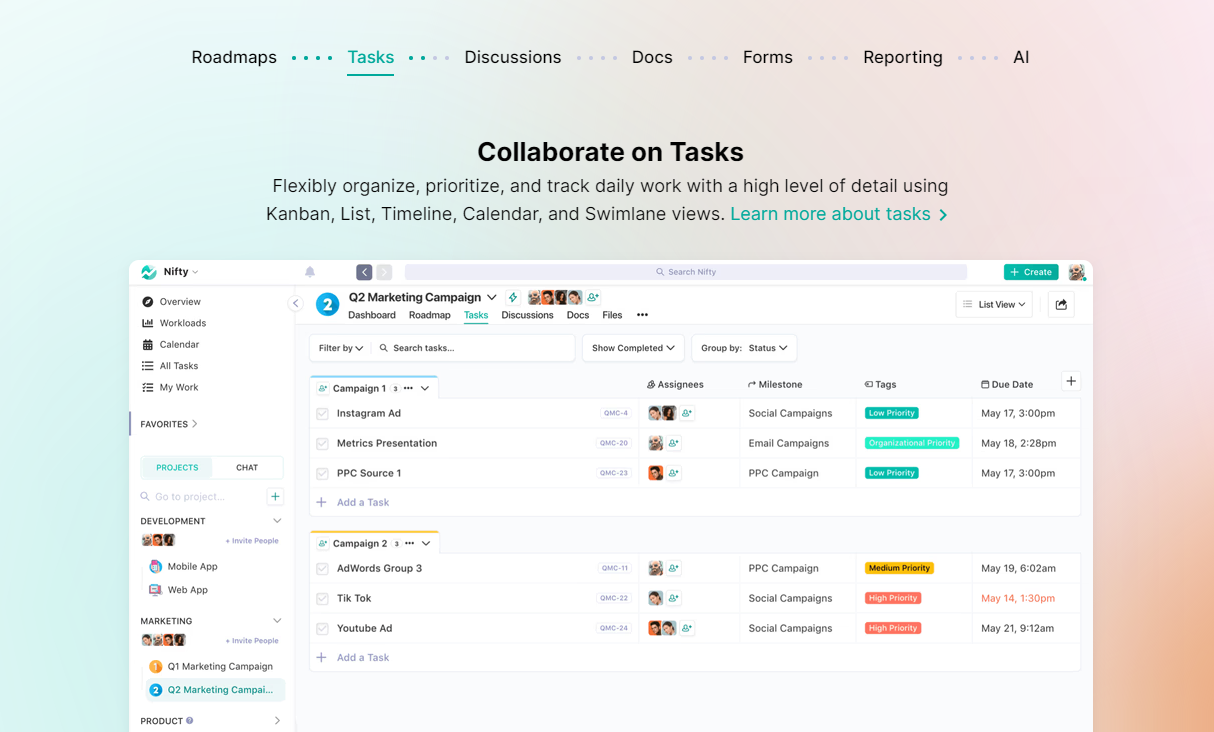Workflow Automation? Best Examples, Benefits & Software

Have you ever wondered how businesses streamline complex tasks and boost productivity? The answer lies in workflow automation.
Organizations can use workflow automation tools and software to automate routine work and decrease errors while increasing productivity.
But what exactly is workflow automation? In this article, we’ll look at its definition, provide some examples, and discuss its benefits.
Discover how digital workflow automation can transform document handling and project management, driving your business to new heights of success. Dive in to learn more!
What is workflow automation?
Workflow automation is the process of using technology to simplify and automate routine activities and procedures. Organizations can improve productivity, consistency, and accuracy by implementing process automation technologies and software.
Digital workflow automation integrates numerous software programs and tools to automate document processing, data entry, and other everyday tasks. It lowers the possibility of human error and speeds up job execution, increasing total productivity and operational efficiency.
Gitnux research says document workflow automation can eliminate repetitive operations by up to 95%, making data entry and document routing faster and smoother.
Workflow automation software guarantees that tasks are consistently completed while conforming to preset business rules and standards. This results in higher compliance, increased accuracy, and significant time savings.
Furthermore, it has been reported that employees save six or more hours each week by automating repetitive tasks. Are you still interested in learning more about workflow automation?
What are workflow automation examples?
Streamlining many company activities can dramatically improve efficiency and accuracy. Here are some key examples of how workflow automation can improve various parts of your business.
Employee onboarding
Workflow automation is a great way to improve essential procedures, such as onboarding new employees. Automating onboarding requires tools to manage processes such as form completion, document submission, and task assignment.
Key advantages include:
- Automated Form Completion. New recruits receive automated emails with links to required forms, which they may complete and submit online using verified addresses through Debounce.
- Streamlined Document Submission. Workflow automation software directs these forms to the appropriate departments for assessment and approval.
- Task Assignments. Automatically schedules orientation sessions and training, assigns appropriate equipment, and sets up access to company systems.
- Consistency and Efficiency. Provides a consistent and efficient onboarding experience while decreasing administrative workload and errors.
Automating the onboarding process can improve staff satisfaction and speed up their integration into the organization. By using a well-designed onboarding template, companies can ensure that the workflow is consistent and efficient, further enhancing the effectiveness of the automation in quickly getting new employees up to speed.
Accounting Automation
Accounting automation refers to the use of technology to streamline and simplify accounting processes, reducing the need for manual intervention. This automation comes when you select the right accounting software that can encompass a range of activities such as data entry, invoice processing, financial reporting, and compliance checks. With the integration of AI in accounting, businesses can further enhance these processes by utilizing machine learning algorithms to predict trends, automate repetitive tasks, and provide more accurate insights into financial data.
By leveraging tools like workflow automation, rolling forecast and optical character recognition (OCR), businesses can enhance the accuracy and efficiency of their financial operations. This not only reduces the risk of human errors but also ensures timely processing and better adherence to financial regulations.
Adding a revenue recognition solution can further streamline financial workflows by ensuring income is recorded accurately and in line with current accounting standards.
If you’re looking for a reliable cloud-based accounting software, Refrens is a great option. It offers comprehensive features that cater to the needs of businesses, helping them manage their accounting processes seamlessly and efficiently.
Invoice processing
Invoice processing is an essential legal operation that can be improved significantly by workflow automation. With these solutions, businesses can streamline the invoice lifecycle from receipt to payment.
Optical character detection (OCR) technology automatically takes and digitizes incoming invoices. Workflow automation software then distributes bills to the right individuals for inspection and approval. This prevents human errors by automatically matching invoices with purchase orders and delivery receipts.
Integrating invoice factoring software into this process can further streamline cash flow management by enabling businesses to quickly convert approved invoices into immediate funds.
Teams that automate billing often face timing gaps in receivables; for context, here’s a practical overview of receivables financing providers.
Automating the entire process also lays the groundwork for faster transactions, especially when integrated with an online merchant service that supports seamless payment collection.
For example, Billdu invoicing software may automate these processes, significantly lowering manual labor and shortening the payment cycle.
Automating invoice processing can result in cost savings, greater accuracy, and better compliance with financial regulations, ultimately leading to more efficient financial management.
Expense reporting
Automation significantly improves spending reporting by making it more efficient and precise. With workflow automation technologies, employee expense reports can be submitted, reviewed, and approved smoothly.
Employees can quickly upload receipts and expense details through an automated system. Workflow software automatically categorizes spending, validates compliance with company regulations, and routes reports to the project managers for approval.
- Receipt Upload: Employees can easily upload their receipts.
- Automated Classification: Software categorizes expenses automatically.
- Policy Verification: This ensures that corporate policies are followed.
- Approval Routing: Refers to the right managers.
Expense reporting automation eliminates manual data entry, decreases errors, and speeds up the reimbursed process. It also provides better expense tracking and more precise financial reporting.
Automated expense reporting can save time, minimize administrative stress, and improve financial efficiency.
Customer support ticketing
Ever feel like you’re drowning in client inquiries? Workflow automation could be your lifeline.
Automated customer assistance ticketing streamlines the entire process, guaranteeing that issues are resolved quickly and efficiently. It handles ticket creation, categorization, and routing to the relevant support agents, leading to faster response times.
- Automated ticket creation converts customer inquiries into tickets automatically.
- Categorization automatically sorts tickets by issue type.
- Routing directs tickets to the right support agents.
The result will be more satisfied customers and improved response times. Automating assistance allows companies to manage larger numbers of questions with greater accuracy and efficiency.
Marketing campaign management
Automating marketing campaign management involves using tools to streamline campaign conception, approval, and implementation. These tools allow you to schedule social media postings, send email campaigns, and track real-time performance.
When dealing with large contact lists, using an email validator can help keep your lists clean by catching invalid addresses early, which reduces bounce rates and boosts deliverability.
By lowering the pressure of repetitive chores, marketing teams can dedicate more time to strategic planning and creative development, increasing campaign effectiveness.
Automation improves teamwork by offering a centralized platform for managing all campaign activities, especially when integrated into an all-in-one community platform that supports content, engagement, and communication in one place. This leads to more efficient execution and improved results.
Finally, this streamlined strategy increases engagement and ROI, making marketing activities more effective and measurable.
Sales lead management
Workflow automation makes it easy to manage sales leads. Automating this process guarantees that leads are promptly captured, qualified, and assigned, which frees up sales teams to focus on completing deals.
Here’s where automation can help:
- Lead Capture: Automatically collects leads from a variety of sources.
- Lead Qualification: Scores and prioritizes leads using specified parameters.
- Assignment: Send qualified leads to the appropriate sales representatives.
Automating sales lead management lowers the likelihood of leads slipping through the cracks and improves response times. Imagine your leads being managed so smoothly that even your competitors want to buy your product!
You can also boost your productivity while improving tracking accuracy, increasing conversion rates, and improving sales performance.
For companies that sell through channel partners, automating partner workflows (deal registration, lead distribution, MDF approvals, and co-marketing) is just as critical. Evaluating the best partner relationship management software can help you choose platforms that trigger assignments, approvals, and notifications based on partner tier, region, and product line, while syncing with your CRM and project tools. With PRM + workflow automation, partner onboarding accelerates, pipeline visibility improves, and compliance is easier to enforce.
Document Approval
Business expert John Doe said, “Automated workflows ensure that approvals are consistent and timely, reducing bottlenecks significantly.” This improves document approval processes, productivity, and accuracy when managing company documents.
The key features of automatic document approval consist of:
- Routing documents automatically, according to preset rules, to the appropriate approvers.
- Real-time tracking makes it possible to monitor the progress of documents as they are approved.
- Compliance Assurance guarantees that papers are evaluated following business policies and requirements.
Streamlining document approval eliminates delays and errors, resulting in faster turnaround times. It also saves time while boosting overall productivity and compliance.
Discover the best workflow automation tools
Get Started
10 Benefits of Workflow Automation
Still trying to figure out how process automation may transform your business? Discover 10 key benefits that streamline operations and efficiency.
| Benefit | Description | |
| 1 | Time savings | Automates repetitive procedures, reducing the time required to complete activities. |
| 2 | Resource optimization | Allocates resources more efficiently, ensuring optimal use of workforce and tools. |
| 3 | Consistency | Minimizes variability by guaranteeing that processes are executed consistently. |
| 4 | Scalability | Easily scales operations without increasing workload or complexity. |
| 5 | Data security | Protects sensitive information with automated security protocols and access controls. |
| 6 | Customer satisfaction | Improves service delivery speed and accuracy, enhancing customer experience. |
| 7 | Improved flexibility | Adapts quickly to changes in business processes and requirements. |
| 8 | Performance tracking | Provides real-time data and analytics for monitoring and improving process performance. |
| 9 | Operational transparency | Offers clear visibility into process stages and performance metrics. |
| 10 | Employee satisfaction | Reduces burnout by removing monotonous tasks, allowing employees to focus on more meaningful work. |
What are the key steps to automate workflows?
1 Identify processes
The first step in automating workflows is to identify repetitive, time-consuming, and rule-based processes.
Focus on tasks with a constant pattern, making them great candidates for automation. Employee onboarding, which includes filling out forms and creating user accounts, is an excellent example.
Collaborate with stakeholders from several departments to gain insights into different workflows. Their feedback helps to identify the most impactful procedures, resulting in considerable increases in efficiency and accuracy.
Identifying the correct processes is critical for successful workflow automation, which increases productivity and lowers error rates.
2 Define goals
Setting the right goals is critical for successful workflow automation.
Start by setting clear and measurable goals, such as eliminating errors, speeding up processing times, or enhancing compliance. These objectives will guide your automation efforts and help you measure progress.
For example, if your goal is to “reduce the processing time by 50%,” you will have a clear target to aim for.
Remember that a goal without a plan is just a wish- kind of like hoping for a coffee break that lasts all day. Clear goals keep your automation efforts focused and effective.
3 Map workflows and choose tools
Begin by mapping processes and documenting each step in detail. Create a visual representation, such as a flowchart, that shows the complete process from start to finish. Ensuring a complete comprehension of the workflow aids in locating bottlenecks and unnecessary stages.
Next, select the proper tools or software to automate workflow. When choosing the best tool, consider features, integration possibilities, and user reviews. Popular choices include:
- Nifty
- Trello
- Kissflow
- Jira
- Zapier
Combining detailed workflow mapping with the right tools results in an efficient and effective automation process.
4 Design and test
Design the automated workflow using the tools you’ve chosen, including all of the necessary phases, rules, and conditions.
Extensive testing will be conducted to confirm that the procedure works as expected. This includes doing pilot tests with a small team or restricted transactions to detect and resolve problems.
Testing is essential to confirm that the automation works efficiently and adequately before full implementation. Validate that the workflow achieves the defined goals through automation testing and make any necessary improvements to boost performance.
5 Implement
Implementing an automated workflow involves setting up the system across the organization.
Begin by training all team members on the new process and explaining how to use the workflow automation tools. Practical training is crucial for successful implementation.
Monitor the initial adoption carefully to address any difficulties as soon as they appear. Communication with your team is vital for gathering input and making required changes.
For more detailed advice, look at how experts automate workflows.
This structured rollout guarantees that the new automated procedures integrate seamlessly into your business’s everyday operations.
6 Monitor and optimize
Congratulations, your workflow automation is now live! But the journey does not end here. Continuous monitoring of the workflow is required to guarantee that it runs efficiently.
Use analytics and customer feedback to find areas for improvement. Regularly monitor performance measurements to identify obstacles and errors.
Make the necessary changes to optimize the workflow and respond to changes in company procedures or goals. Keeping an eye on the system allows you to adjust the automated processes according to the current needs of your company.
What is workflow automation software?
Workflow automation software is a technology solution that automates routine, repetitive actions in business operations while increasing efficiency and productivity. The software manages workflows using predetermined rules, allowing businesses to optimize processes, reduce manual errors, and save time.
Software for automating workflows combines multiple tools and applications to streamline processes, including data entry, document management, approvals, or notifications. It offers a single platform for creating, running, and monitoring automated workflows.
Key features of workflow automation software:
- Automated process management
- Real-time monitoring
- Integration capabilities
| Benefits | |
| Increased efficiency | Automates monotonous operations, freeing up staff time for more strategic projects. |
| Improved accuracy | Data entry and other operations are automated, which reduces human error. |
| Enhanced Visibility | Provides real-time insights into workflow status and performance. |
Implementing project management software allows companies to improve operational efficiency, increase compliance, and allocate resources more effectively.
This is essential for companies wanting to streamline their processes and remain competitive in a fast-paced market.
4 Best workflow automation software in 2025
Choosing the right workflow automation software is critical to maximizing productivity and efficiency, particularly in a hybrid work environment.
Here are some of the best workflow automation software alternatives, each with unique strengths and capabilities to meet your individual needs.
1.Nifty
Nifty stands out as the best solution for workflow automation. For companies looking to streamline their operations, it is an essential tool that combines task management, project tracking, and team communication attributes.
Features
- Automated Task Management: Seamlessly create, assign, and track tasks with customizable workflows.
- Goals Tracking: Set and monitor project milestones to ensure timely delivery.
- Improved Collaboration: Built-in chat and document-sharing features facilitate smooth team communication.
- Time Tracking: Integrated time tracking for improved productivity and accountability.
- Project Portfolios: Manage and oversee multiple projects from a unified dashboard.
Pricing
- Free Plan: Basic features to get started.
- Starter Plan: $7 per/user/month
- Pro Plan: $10 per/user/month
- Business Plan: $16 per/user/month
Best for
Nifty is ideal for teams and enterprises that want to automate their workflows successfully. It is especially useful for small and medium-sized businesses that manage several projects.
Get the best workflow automation software
Get Started
2. ClickUp

ClickUp is a flexible workflow automation program that aims to increase productivity and streamline company procedures. It includes powerful capabilities like task management, time monitoring, and real-time collaboration, all on one platform.
Features
- Advanced Automation: Set custom triggers and actions to automate routine tasks.
- Time Tracking: Monitor the time spent on tasks to improve productivity.
- Real-Time Collaboration: Facilitate seamless chat, comments, and document sharing.
- Custom Dashboards: Create personalized dashboards to track project progress and performance.
Pricing
- Free Plan: Includes unlimited users and tasks.
- Unlimited Plan: $5/person/month.
- Business Plan: $12/user/month.
- Enterprise Plan: Custom pricing.
Best for
ClickUp best suits teams and companies looking to increase workflow efficiency and job management. Software is helpful for enterprises seeking an all-in-one solution for collaboration and precise project performance tracking.
3. Jira

A solid workflow automation application developed primarily for software development teams. It excels at task and problem management and offers a strong foundation for tracking and managing agile projects.
Jira effortlessly connects with various technologies, improving team collaboration and project visibility.
Features
- Customizable Workflows: Tailor workflows to fit specific project needs.
- Advanced Reporting: Generate detailed reports and analytics.
- Integration Capabilities: Connect with various development tools and third-party applications.
- Agile Support: Built-in support for Scrum, Kanban, and other agile methodologies.
Pricing
- Free Plan: For a maximum of 10 users.
- Standard Plan: $7.75/user/month.
- Premium Plan: $15.25/user/month.
- Enterprise Plan: Custom pricing.
Best for
Jira Software works well for software development teams who want to improve their project management. It is especially effective for businesses that need extensive problem-tracking and customizable workflows to help with their development processes.
4. Kissflow

Kissflow is a complete process automation program that simplifies company operation management. Its low-code platform makes workflow automation simple for users and may be used for various business tasks.
The platform seamlessly connects with other technologies, increasing efficiency and collaboration.
Features
- Low-Code Workflow Design: Create workflows without extensive coding knowledge.
- Real-Time Analytics: Track workflow performance with detailed analytics.
- Integration Capabilities: Connect with numerous third-party applications.
- Form Customization: Design and customize forms to fit specific process needs.
Pricing
- Basic Plan: $15/user/month.
- Advanced Plan: $30/user/month.
- Fully Loaded Plan: Custom pricing.
Best for
Kissflow is excellent for businesses looking for a user-friendly, low-code platform to automate their processes. It is handy for enterprises that need to manage complex processes across multiple departments.
Conclusion
Workflow automation may transform your company’s operations, increasing productivity and efficiency across multiple processes. Using the proper technologies can help speed up activities, decrease errors, and increase teamwork.
Start improving your business efficiency with workflow automation now!





